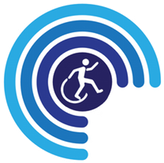My published statement below adequately summarizes my view on AT:
THE CHALLENGES IN CREATING TRUE INCLUSION
September 2012 • Exceptional Parent Magazine • www.eparent.com
“UDL (Universal Design for Learning) is the essential orientation for classroom design to serve both low and high incidence needs, but it does not supplant the individual’s need for assistive technology. Assistive technology is not merely accommodation (as it is described in IEP’s); it is, as hinted at in the federal statute, the means to ‘increase, maintain, or improve the functional capabilities of a child’ by serving as a sensory extension of that child into the world, allowing participation in ever-increasing opportunities. Assistive technology, when effectively selected, applied, and integrated, is a verb, not a noun – it is an active orientation, a process for interacting in the world. It is the means by which a student actively compensates for a sensory impairment of any kind, to join in activities that were previously inaccessible, whenever they chose to do so. And a truly effective approach allows the child to take responsibility for his own output and become increasingly independent. Educators who do not believe that all students have untapped learning potential are not going to seek assistive technologies which may reveal those abilities. It’s a discouraging loop. An educator’s personal beliefs that a child with a learning disability has ‘reached potential’ or that another child who is nonverbal
and physically impaired cannot ‘overcome’ such challenges, will prevent that educator from pursuing alternative approaches. We have to radically alter educational perceptions (in both academia and in the classroom) as to who really can be a learner. In essence, in this day and age, we need to understand that anyone and everyone can learn.”
Mark Surabian, Assistive Technology Specialist
